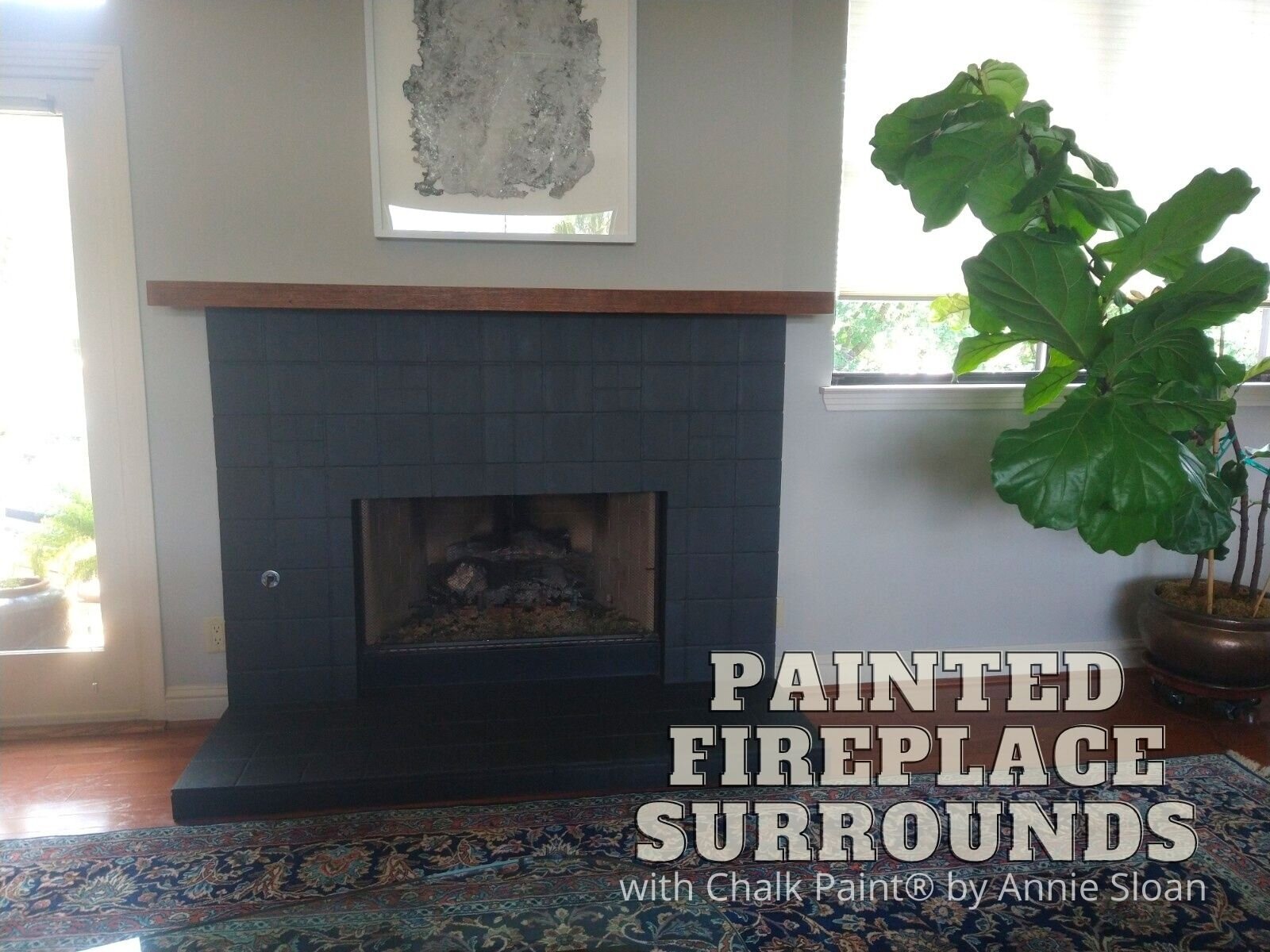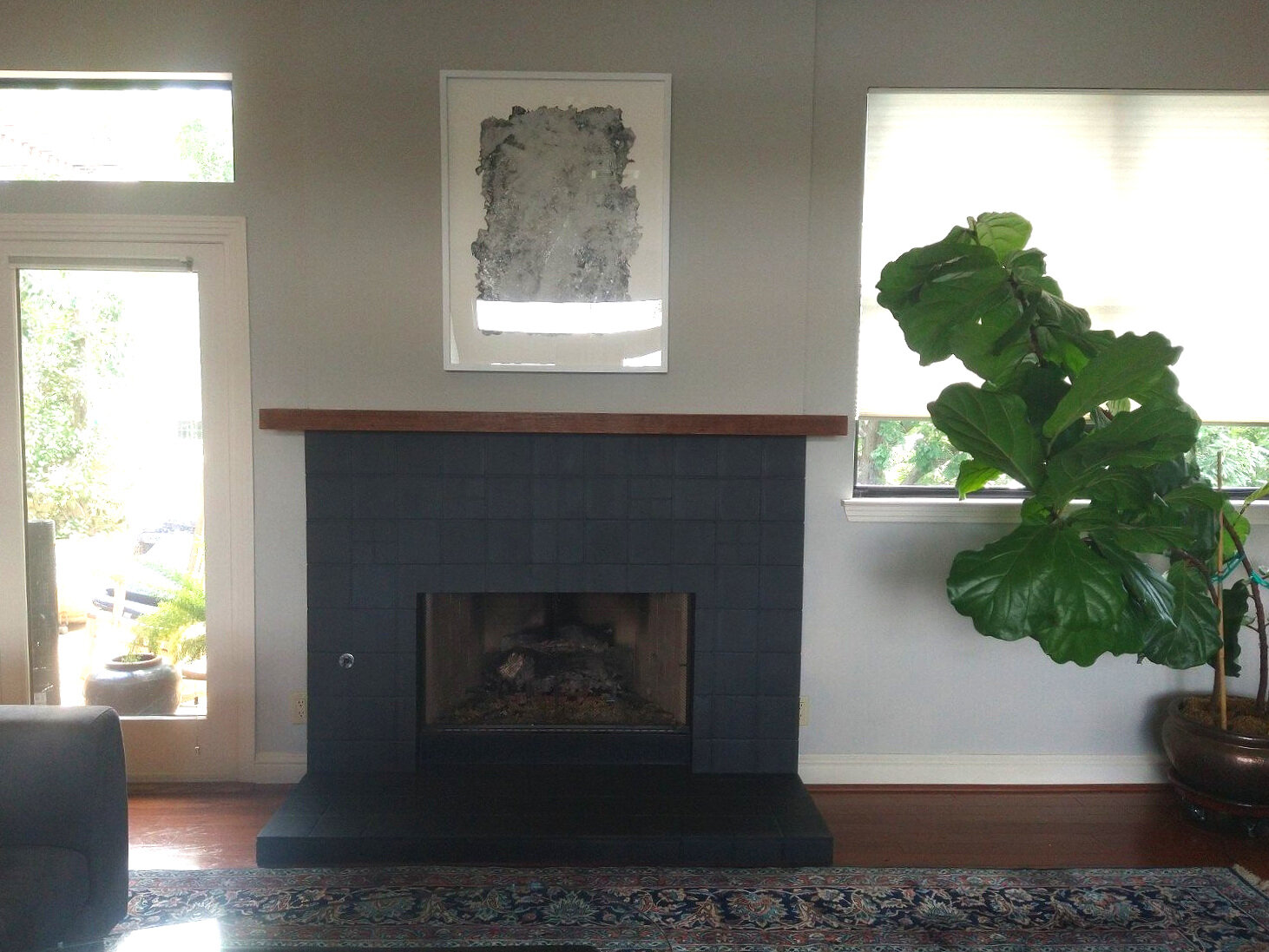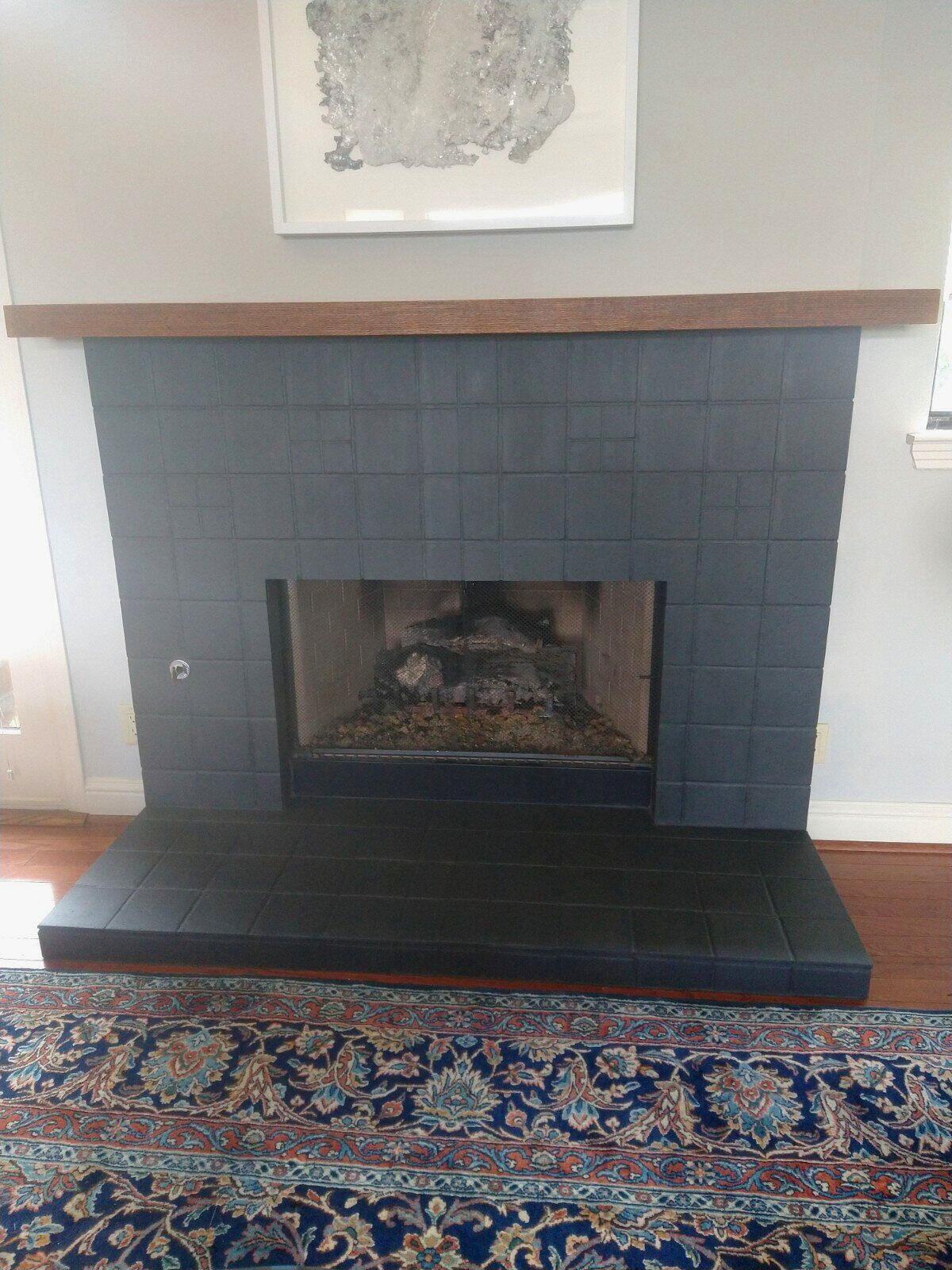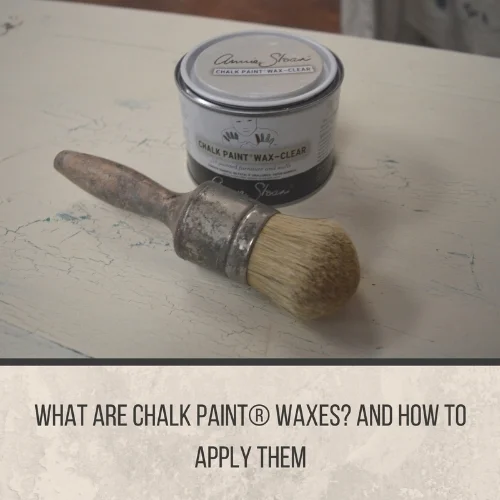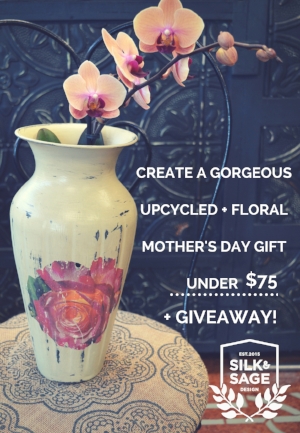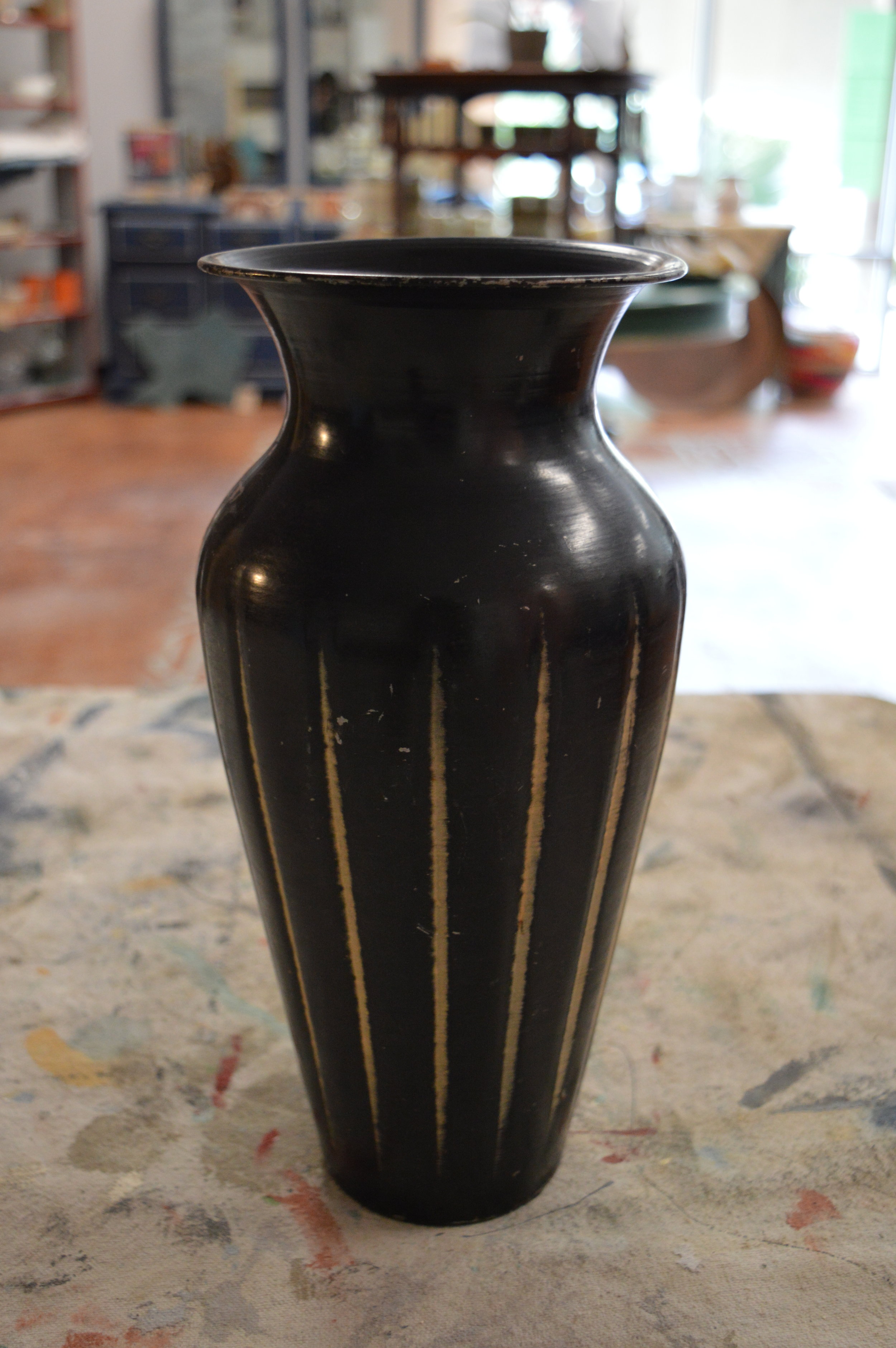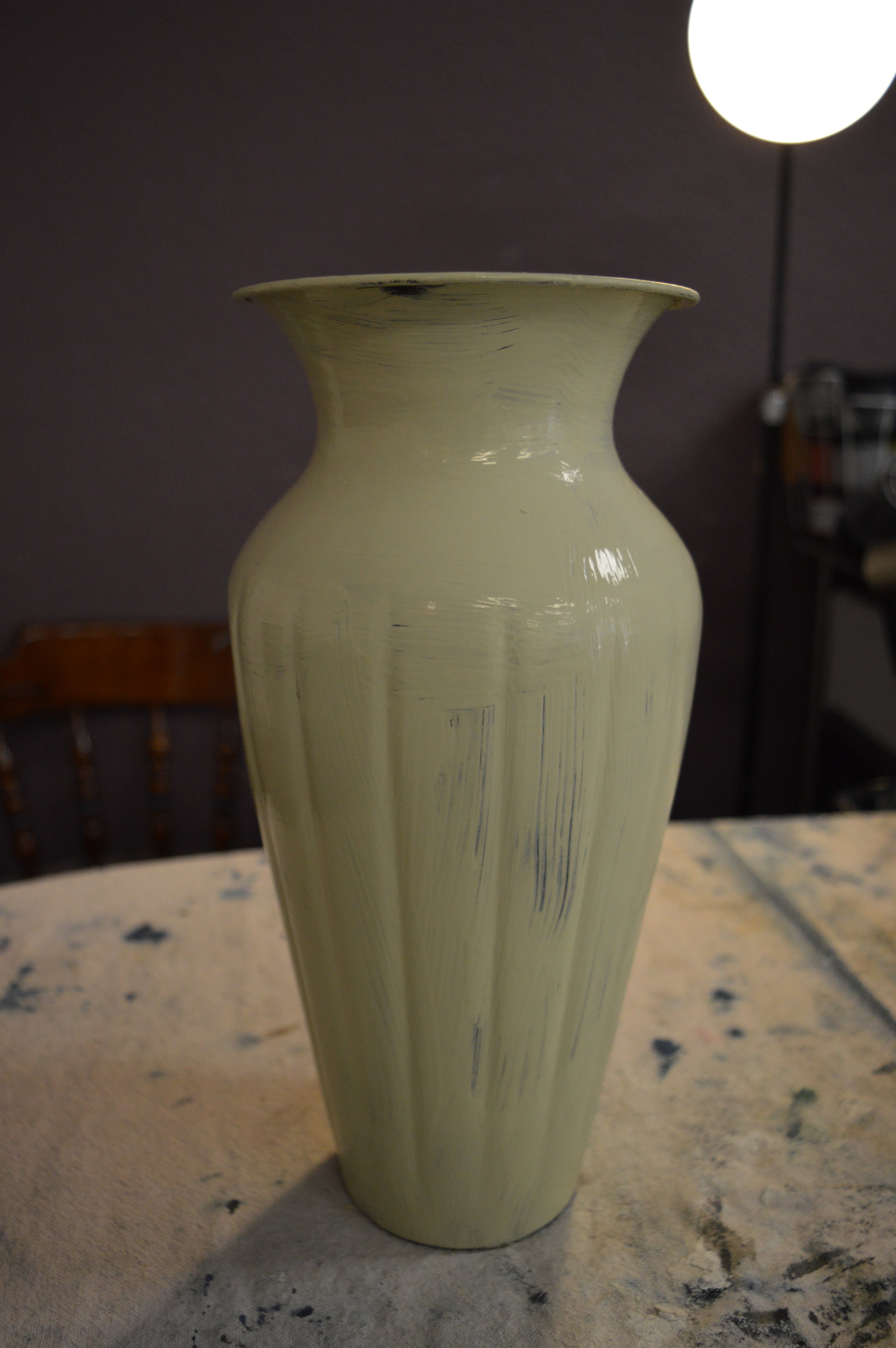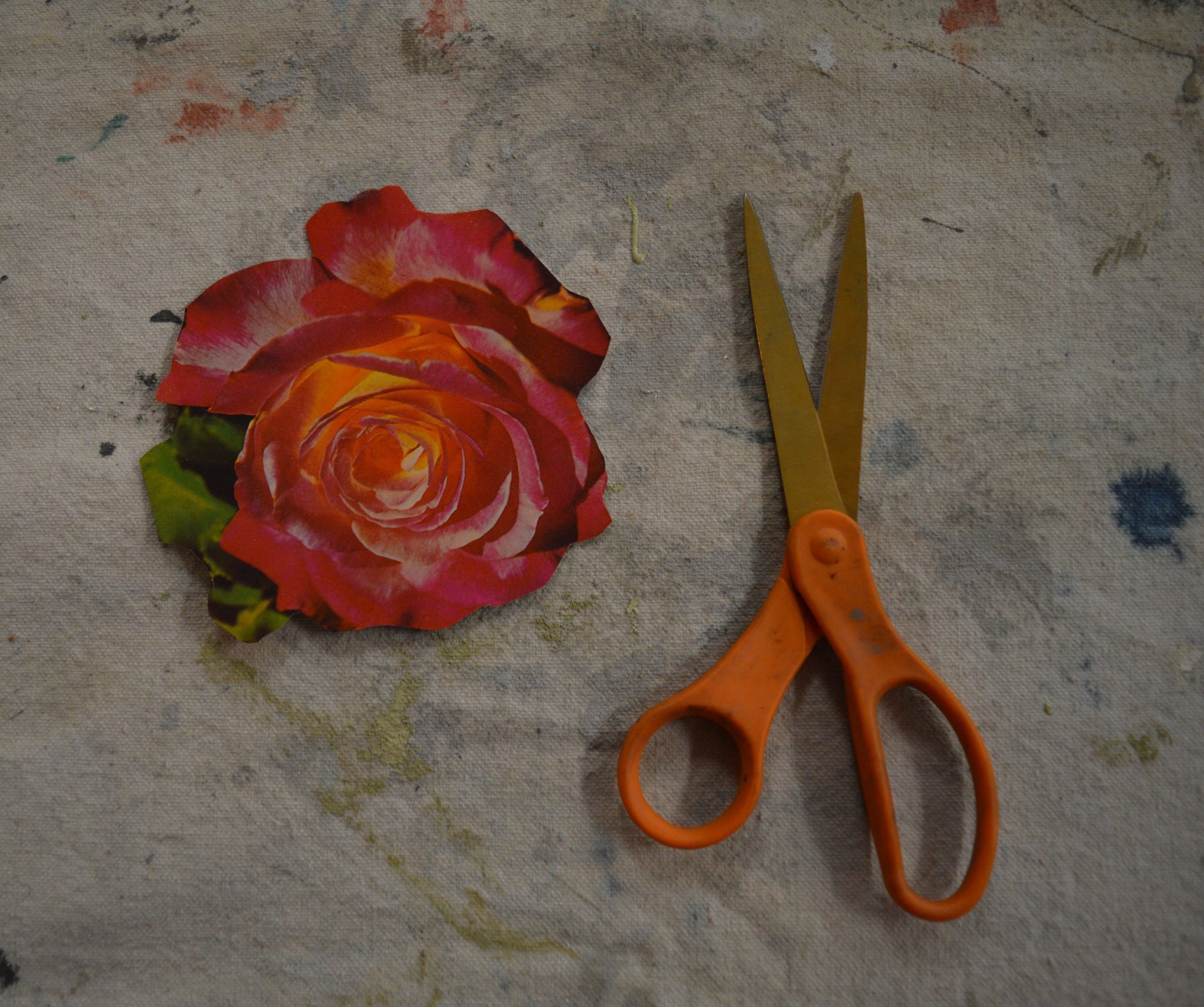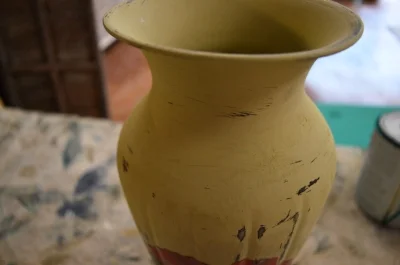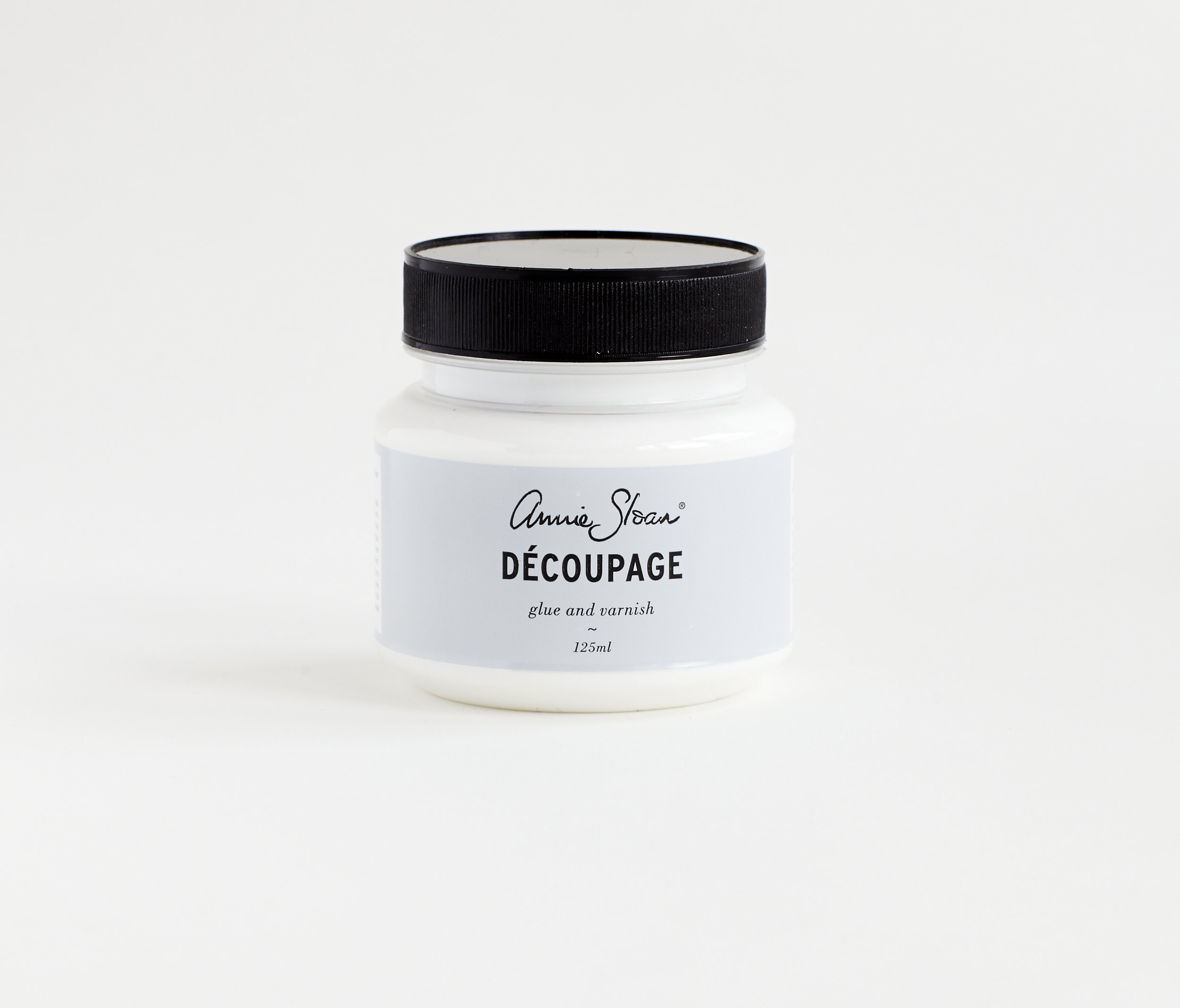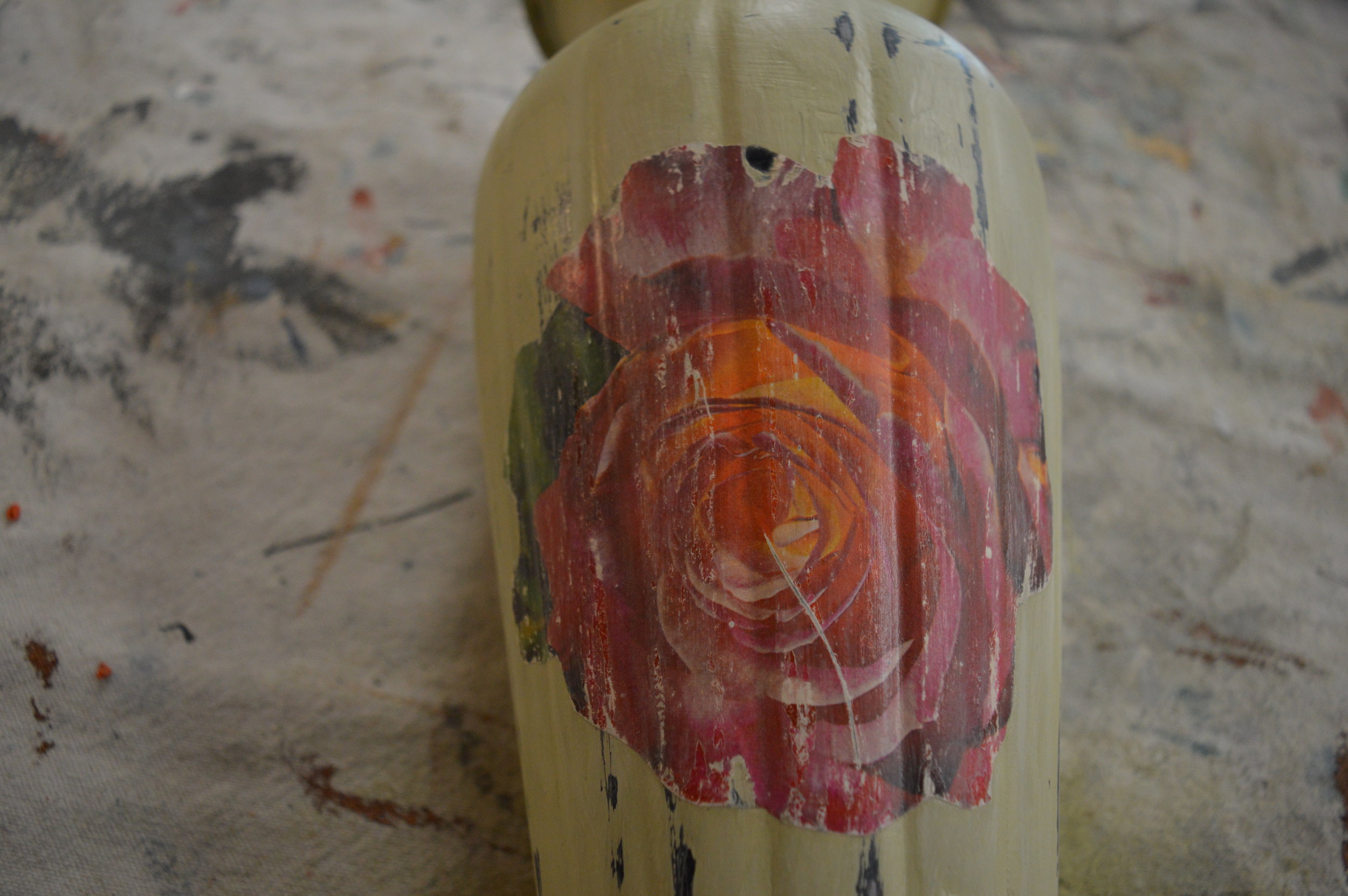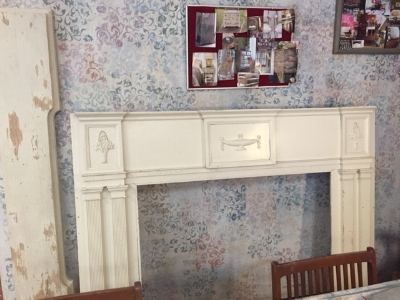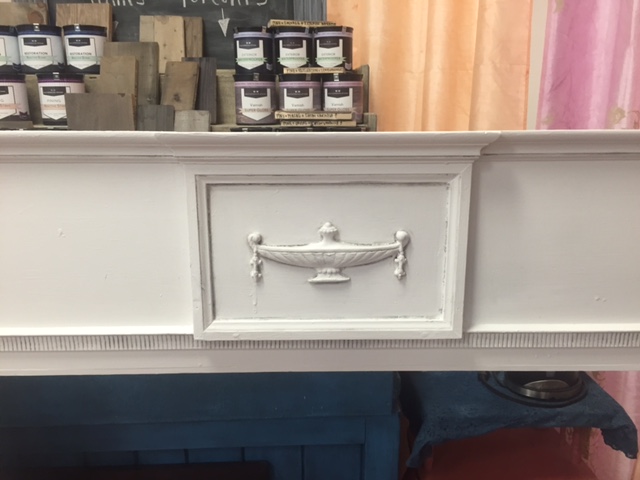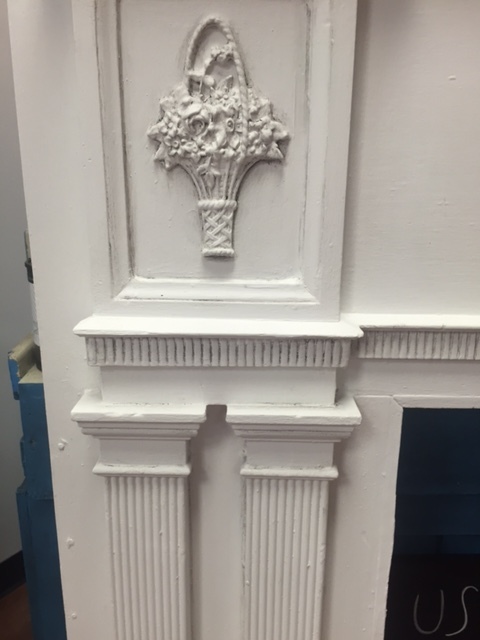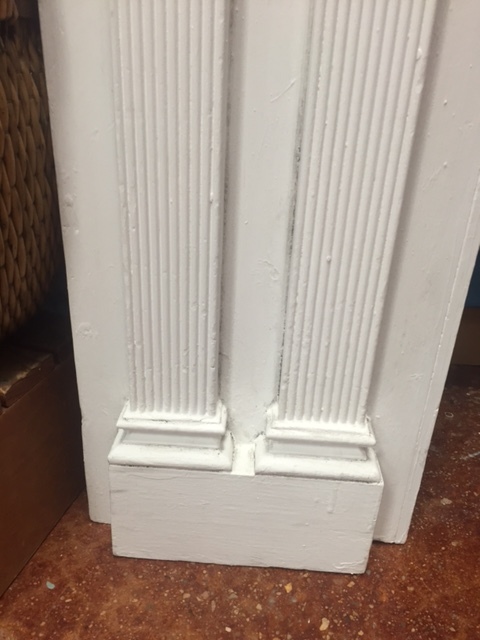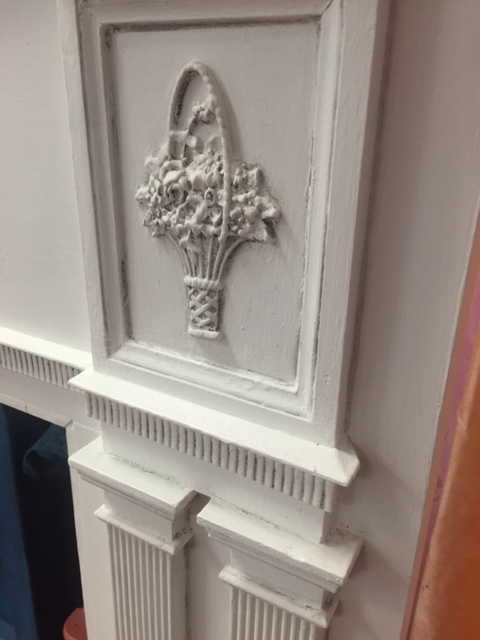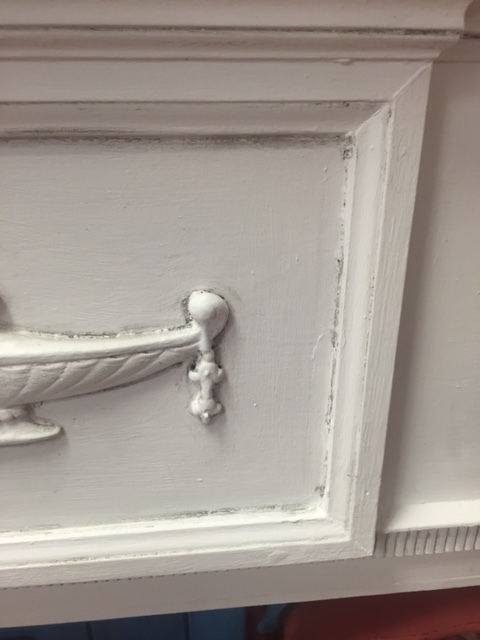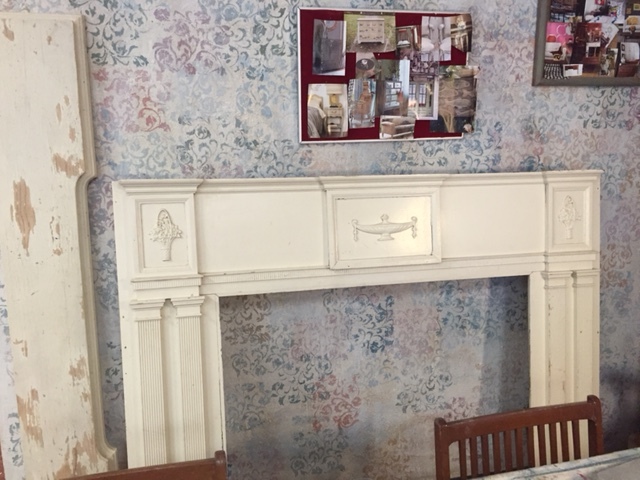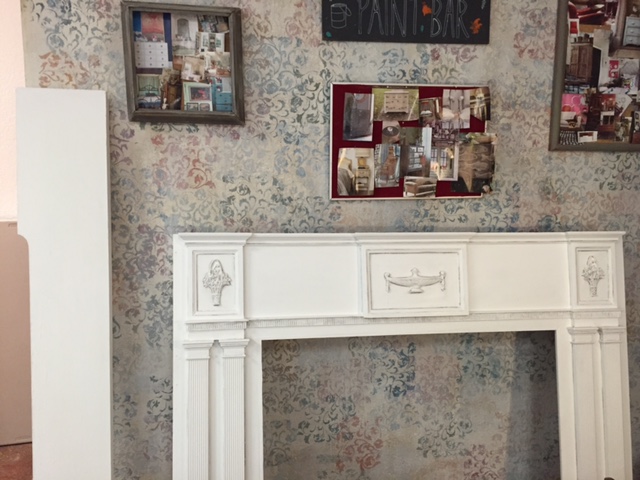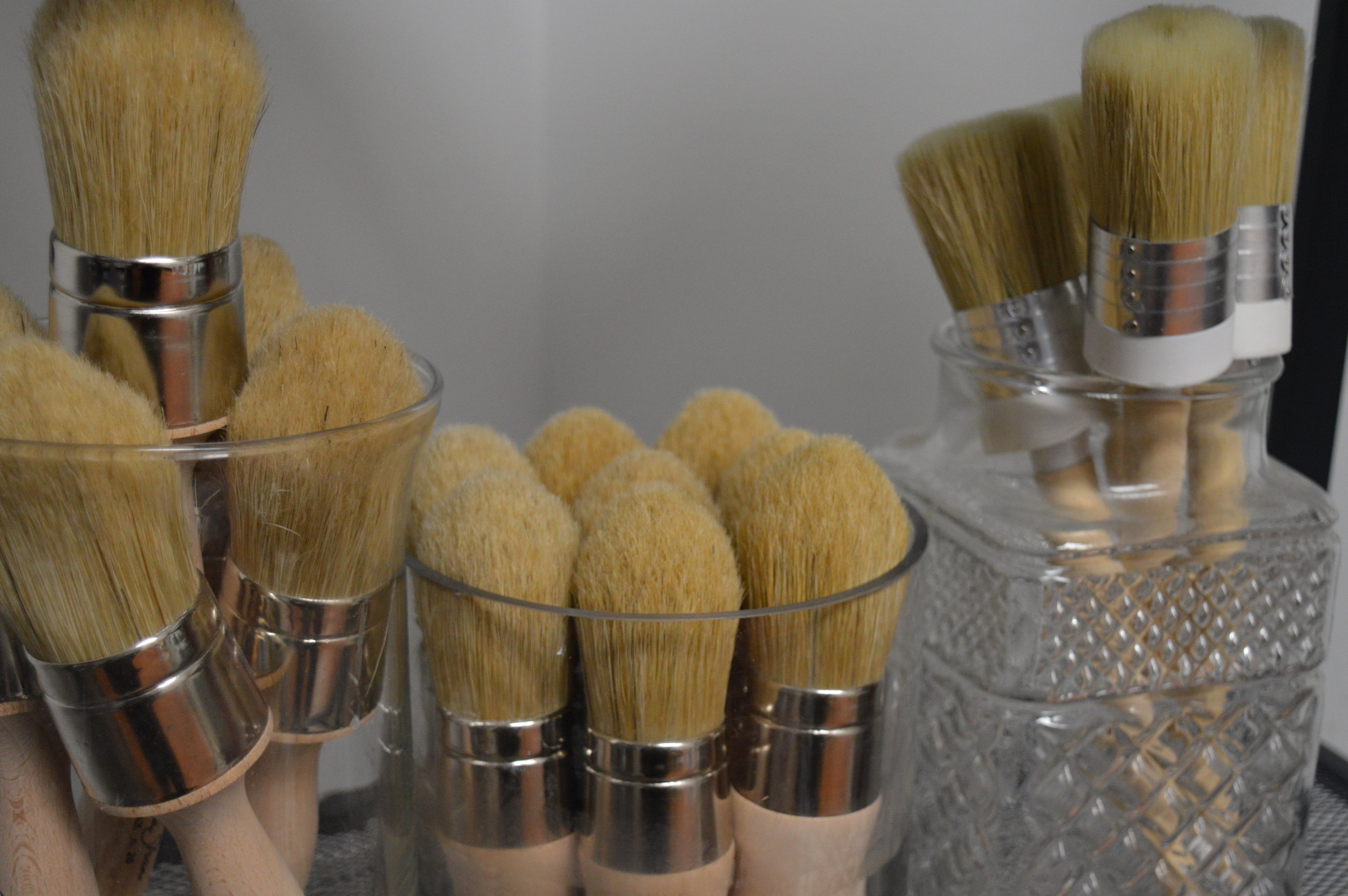
Home Improvement Project Idea: Painted Fireplace Surrounds with Chalk Paint® by Annie Sloan
Stuck at home like all of us? Painted fireplace surrounds can immensely change a room’s look and be knocked out in a weekend or less…
Hey there, 2020 sure has been a wild ride, and we’re here with our first blog post of the year. Good gosh. Like many of you, we have been spending increasing amounts of time at home and assessing every nook and cranny for ‘improvements’ to pass time and stay in our own space. Sometimes these improvements are purely based off changing style preferences, and sometimes are crucial to the overall state of certain rooms and structures.
One such project is changing up fireplace surrounds and mantles! Whether wood, tiled, or stone, they can be painted to varying degrees and styles. That’s great news because here in Texas, some of our stone fireplace surrounds are looking seriously dated. Instead of ripping out the old tile or stone, painting them up can be done in a weekend (or even shorter)! Here are two easy-to-knock-out painted fireplace surround ideas:
Complete Overpaint (Solid/Opaque Coverage, Over Tile and Possibly Even the Grout; Works Well on All Surfaces)- Chalk Paint® will cover both porous and slick-glazed tile, and certainly the grout as well (if it’s the wrong color, if it’s dirty, if you want complete-coverage and a knocked-back look). To paint, clean the tile first with a gentle eco-friendly degreaser (like Krud Kutter), nothing sudsy, rinse, and let dry; for porous tile, you may want to add 5-10% water to the paint to make it soak in very well, and for slick-glazed tile you may want to wait an extra long drying period between paint coats to prevent ‘double processing’ the paint (instead of a couple hours, wait several hours or even overnight between coats to allow an extra great bond to the tile). Apply as many paint coats as you’d like for desired coverage. You can certainly seal the paint, and Soft Wax often works best, just make sure that the surround doesn’t get too hot if a fire is lit!
Project featured from a Silk and Sage custom-work client, done with Chalk Paint® in Graphite with solid coverage, followed by Clear Wax
Washed Effect (Transparent Paint Coverage/ Showing Some of the Base Material and Color Through the Paint; Works Best on Porous Materials Like Unsealed Tile and Stone, and Dry/Raw/Worn Woods)- To create this effect, choose your Chalk Paint® color (white and grey washes are extremely popular these days due to being so neutral BUT you can do color washes too!) and dilute the paint with water between 50%-80% water (depending on how transparent you want the paint layer to be), and mix paint and water up together very well. Make sure your surface is either degreased or at least make sure none of the stone or tile is crumbling or degrading, brushing off dust and soot. Apply your paint wash with a good natural brush, working in sections. If you want to remove some paint from certain areas and reveal some of the underlying texture and colors, wipe some paint wash away with a lint-free cloth. If wiping away, a great tip is to keep a spray water bottle handy nearby and spritz the washed areas before wiping them, especially if the wash is absorbing and drying into the surface quickly. Add more layers once dried if you like! And again, you may certainly seal the surface when done.
Project shared with Silk and Sage courtesy of customer, J.M., done with Chalk Paint® in French Linen as a more solid base coat followed by a wash with Old White
We love these looks and hope you do too! We are constantly asked about such projects year-round, and always receive lovely status updates on how everything has turned out and lasted over the years. Another way to incorporate this look into other spaces of your home would be on tiled or stone backsplashes too (not inside a shower or constant wet spaces however). If you try this type of project then drop us a line and let us know how it’s turned out! Continue to shop with us using our no to low-contact options to maintain our health during these times.
Happy painting, stay safe and well, xoxo
How to Open the New Chalk Paint® Litre Tin Lids
Have you bought an updated litre of Chalk Paint® but not been sure how to open the lid easily? Using these tips it should be a breeze for you.
Hello! Happy February. Our 2019 is in full swing, how about yours? Part of our new year has been an introductory to the updated packaging for the new Chalk Paint® litres. Have you tried the ‘global’ Annie Sloan paint yet? In case you’ve missed it, Chalk Paint® recently got a tiny update on the amount of clay in the formula, and therefore will be a little bit thicker in feeling going forward. We’ve been LOVING how creamy it is, and dare we say we didn’t know how it would ever possible for Chalk Paint® to get any better than what it’s been (since it’s so dreamy)… but it has. Our students and customers have been loving the update too.
The other part of that update is that the large tins will be transitioning over to litres from quarts, so you’ll be getting a tiny bit more bang for your buck as well. Opening the litre lids is a little bit of a learning curve, so we decided to highlight the best ways to open the lids without mangling them. All in all, they will be easier to press shut with just your hands going forward (instead of hammering them shut, eek).
Opening the tin
Ease the tin opener between the top of the lid and the edge of the tin.
Apply slight pressure and lift upwards.
Turn the tin a few degrees and repeat the motion. You will feel the air tight seal break and hear a “pop” noise.
Continue turning the tin until you have covered the whole circumference of the lid before attempting to pry the lid completely off.
Be as gentle and light handed as possible.
Following these steps will prevent the lid buckling or damaging the tin.
Closing the tin
To secure the lid after use, set in place on the top of the tin.
Place both palms on the lid and apply pressure down until you here a “pop”.
*The Wax, Lacquer, and Chalk Paint® tins are all the same, so you can use this method with every Annie Sloan tin. All metals are susceptible to some bending and denting if not handled gently.
If you haven’t made it to the ‘new’ formulated colors yet, visit us to get a quick painting demo to try it for yourself!
Happy Painting :)
What are Chalk Paint® Waxes and How to Apply Clear Wax
We want to teach you the quintessential waxing technique for Chalk Paint® Waxes- watch the demo videos with Clear Wax.
Have you worked with Chalk Paint® waxes? Waxing is a crucial step to finishing your work and creating a durable surface to seal the decorative paint. We're constantly perfecting our technique, and because we know there are many questions (as well as misconceptions) about it, we're off to task to share our tips with you! Feel free to also pop on over to our Chalk Paint® FAQs page.
The waxes come in four types: Clear, Dark (brown), White, and Black. They can be protective AND decorative at the same time. Waxes:
- are completely non-toxic when dried and cured, and even suited for 'child-safe' applications.
- should be at a slightly-melted crisco or butter-at-room-temp texture (sit in a sunny window or warm environment if they feel a bit firm to work with).
- fill the pores of a surface painted with Chalk Paint® decorative paint and cure to leave behind a hard surface that has bonded to the paint.
- in the case of Clear and White Waxes, are applied directly to the painted surface.
- in the case of the Dark and Black waxes, are applied over a wiped-back layer of Clear Wax (so you can control their depth)- the exception to the rule can be over Graphite since it's such a dark color to begin with.
- can be mixed together to create mid-tones like beige and grey.
- can be tinted with a drop of paint for an extra pop, if you need an exciting green or pink wax for example.
- can be layered up to 2-3 coats total for extra durability for heavy-traffic surfaces like cabinets and dining table tops (wiping back thoroughly and waiting 24-48 in between coats).
- dry within 24-48 hours for each coat, however need to be gently-used until they finish curing.
- cure and reach full hardness within a period of 2-4 weeks, depending on how many coats have been applied and humidity (again, gently use your surface depending on its usage- you can probably put your dishes back inside your cabinets, however that kitchen table will need to wait a bit longer to be ready for your dinner party!).
- are water-resistant.
- are interior-grade only.
- once fully dried and cured provide a brilliantly durable surface, which is easily maintained by wiping food spills, dirt, and dust away with a damp cloth or mild soap and water at most- we've also gotten crayon, marker, sharpie, highlighter, and other stubborn marks off by cleaning with more wax, which pulls it right up and out of the surface.
- are as durable as polycrylic-type topcoats when applied correctly and let to fully cure before heavy use.
- can be buffed to a soft satin sheen, or left relatively matte in finish.
Using wax brushes to apply all waxes ensures we don't apply too much or unevenly, and also prevents as much wasting of wax as possible. Here are some in-depth video demos of a preferred technique that works for most surfaces:
Part 1: Using Your Wax Brush to Apply Clear Wax
Part 2: Wiping Your Excess Wax Back, Finishing Up
And here's a concise recap of the waxing process to conclude:
Remember, patience is key when allowing topcoats to fully dry and cure during a DIY process. When you buy new furniture, topcoats have been allowed to fully cure before being put on a sales floor. We do have other topcoats with the same durability for different finish sheens (such as semigloss), for exterior projects, and others that might cure a tad bit sooner for heavy-traffic areas (ex; if you work with wax for your coffee table just keep in mind that you need time to let it cure). For all topcoats on tables we do recommend using placemats, coasters, etc. anyway to protect the finish as long as possible (nothing is completely iron-clad y'all). However we do say 'trust the wax!' because you can't beat it over hand-painted finishes, and can easily spot repair it if unexpected damages do occur.
Create An Upcycled + Floral Mother's Day Gift Under $75! + GIVEAWAY!
We have a step-by-step tutorial to create the BEST Mother's Day Gift, which has upcycled and floral elements, for under $75! Enter our Mother's Day Giveaway while you're at it!
With Mother's Day right around the corner, we wanted to share a great idea for a simple gift that looks fabulous, and will make Mom feel special. Being involved in the creation of your gift makes it heartfelt, and with our tutorial you can create something similar for under $75! Of course these are general guidelines, so feel free to expand or simplify as much as you want! We'll also get into our Giveaway down below...
You'll need:
- One vase or container that's metal, glass, ceramic, wood- $0-$5 (We chose a thrifted find for $5, but you may have something at home already that can be upcycled.)
- Chalk Paint® decorative paint Project Pot color of choice- $15 (We chose Versailles for it's sagey-French appeal.)
- Sandpaper sheet or dampened textured scrubby sponge- $0 (Cost depends on whether you have some at home already or need to buy some. Use that dampened sponge to distress to save on cost!)
- Magazine, paper, newspaper, thin fabric, or tissue paper cutout- $0 (Almost everyone has something at home already that has a cool image on it that can be cut out!)
- Scissors- $0 (Again, almost everyone has a pair of scissors at home or a pair that can be borrowed from a friend or family member.)
- Chalk Paint® Image Medium / FKA Decoupage Varnish- $20.50 (This item is a bit of a splurge, however it lasts through many uses and does decoupage and image transfer in the best way, without smudging inks from printed images- however if it isn't friendly to your budget, you may forgo this part of the project!)
- Small Paintbrush- $0-$15 (Most individuals have a brush at home, however we have a range of brushes from $3 to $15 in the shop that would suit a small project well.) We chose our Annie Sloan Small Flat Brush
- Orchid, plant, or floral arrangement- $16 (We visited our neighbor, Freytag's Florist on West Anderson Ln. in Austin, for a mini Orchid so that Mom can continue to grow her gift! Shop local and sustainable- find your own favorite neighborhood florist!)
Here are the steps:
1. Apply your Chalk Paint® decorative paint color to your vase or planter surface- you may need a second coat if desired. For 'normal' surfaces, give a couple hours dry time between coats, or give 12-24 hours dry time between coats for shiny and slick metal or glass surfaces. The color we chose for our project is Versailles for its sagey-French appeal!
2. While waiting for paint to dry, cut out your image for decoupage. Try to choose something that has a generally defined outline, as opposed to something that will have tons of tiny intricate details to make it easier to cut out. We love using images from old books, magazines, newspapers, giftwrap, and even thin fabrics or tissue paper. Get crafty my friends!
3. Add a second coat of paint as needed, with the applicable dry time for your kind of surface.
4. Once dry, distress through the paint using medium grit sandpaper or a dampened scrubby sponge until you achieve a lightly aged look. Distressing looks natural over edges and raised areas.
5. Apply the Chalk Paint® Image Medium (formerly known as Decoupage Varnish) to the backside of your image, and gently press the image down onto your vase surface with one corner, and slowly press the entire image down while working out air bubbles. Apply a thin coat of your Image Medium over the cutout and let it dry. Decoupage isn't so difficult, we promise!
6. Apply 2-3 thin coats of the Image Medium total for durability. We used the Medium as a varnish over the whole vase surface as well. You may also sand the image edges down to make it feel less raised and to distress and fade the image.
7. Add your plant or flower arrangement of choice to complete the gift. We chose a lovely mini orchid from Freytag's Florist on West Anderson Ln. in Austin, so that it could be a sustainable gift that keeps growing (we added little rocks below the orchid in the vase for good drainage- always make sure to plant with proper conditions based on what you choose, and to include care instructions!). Mom can also change the planter or vase up as needed as the plant grows, and continue to repurpose the planter or vase. Remember to visit your own local florist!
The result is something truly special. Doesn't it feel great to make a gift? This is absolutely a project that can be completed within a couple of days (even within one day depending on materials used). Share your own results with us, and if you're in or near Austin stop by our Shop & Studio at 2700 W. Anderson Ln, Ste 228 for all Chalk Paint® supplies. Otherwise find your local stockist here.
Watch our tutorial video to visualize the process!
And now for our GIVEAWAY! We are excited to announce that one lucky person can win the very same decoupage vase that we created for the tutorial. To be entered to win, please complete all steps below:
Before & After: Antique Mantle
We repainted and repaired an antique mantle, with Chalk Paint® Pure White plus waxes for a subtle yet fresh update!
When we were approached to rework this lovely antique mantle, we immediately said yes (for many reasons, mainly because we do this for a living duh!). This is something that we would only find in our vintage and antique-picking dreams we felt... and it needed some love and color updating for sure.
First we made sure to thoroughly clean it, plus sand and scrape away the peeling latex paint layers where applicable. Whenever working over a previously painted surface you must sand down chips and scrape away anything actively chipping, otherwise it can peel up your new paint layer. Next we assessed some cracking along seams of the 'shadow box' details:
This is not an uncommon encounter when working on old wooden pieces. Seams can split, and one common place to notice this is on everyday surfaces like doors, cabinetry, and window frames. We caulked these with 'painters caulk,' Big Stretch specifically. It's geared toward high flux of seams especially when painted over (make sure to check cure times and time between caulk and paint when using on your own). We trust this option too because once cured, Chalk Paint® decorative paint would adhere well.
Next we primed with our water-based, white-tinted Smart Prime because some old stains were evident to be popping through the Pure White. We think these may have been from old smoke that absorbed into the wood from long ago use. No matter how much you clean, sometimes a chemical or other substance might just need to be covered up durably! We learn to be flexible with these things...
And then two coats Pure White Chalk Paint® decorative paint, plus clear wax all over, and black wax in the details with a light hand. Voila! It's not a super drastic change, however it breathed new life into this piece by freshening it up and helped the uniquely carved details stand out better. Have you painted a mantle before? How did it turn out? Feel free to share! Happy Painting xoxo

